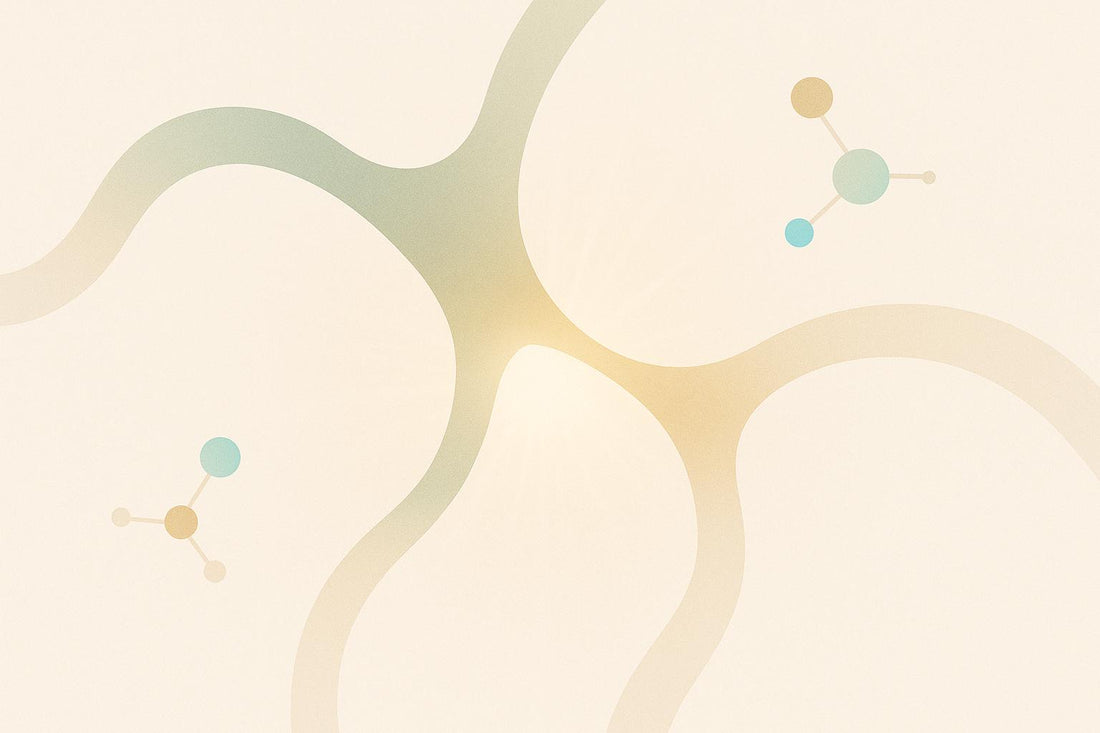Catalase is a key enzyme that helps protect your brain by neutralizing harmful oxidative stress, specifically hydrogen peroxide, which can damage the blood-brain barrier (BBB). The BBB acts as your brain's security system, keeping harmful substances out while allowing essential nutrients in. However, oxidative stress, caused by reactive oxygen species (ROS), can compromise the BBB, leading to inflammation and diseases like Alzheimer’s and Parkinson’s.
Here’s what you need to know:
- Catalase’s Role: It converts hydrogen peroxide into water and oxygen, preventing oxidative damage and supporting the BBB's integrity.
- Oxidative Stress and the BBB: High ROS levels damage tight junctions in the BBB, allowing harmful substances to enter the brain.
- Antioxidants Matter: Enzymes like catalase, superoxide dismutase, and glutathione peroxidase are critical for protecting the brain.
- Emerging Delivery Methods: Nanoparticles and antibody-targeted systems are improving catalase delivery to the brain, overcoming the BBB's selective nature.
- Research Highlights: Studies show catalase reduces brain damage in conditions like traumatic brain injury (TBI) and Parkinson’s disease.
Catalase’s ability to protect the brain from oxidative damage makes it a vital tool for maintaining long-term cognitive health, particularly as we age. Advanced delivery methods are paving the way for its use in treating neurodegenerative diseases.
Blood Brain Barrier, Animation
Catalase: How This Antioxidant Enzyme Works
Catalase is one of the body's most efficient enzymes, playing a crucial role in protecting cells from oxidative damage. This protection is especially vital in the brain, where it helps maintain the integrity of the blood-brain barrier.
How Catalase Neutralizes ROS
Catalase is a powerhouse when it comes to neutralizing hydrogen peroxide (H₂O₂), a potentially harmful byproduct of metabolism. It converts hydrogen peroxide into harmless water and oxygen at an astonishing rate - processing millions of hydrogen peroxide molecules every second. To put this into perspective, a single catalase molecule can handle between 16,000,000 and 44,000,000 hydrogen peroxide molecules per second[2].
The enzyme achieves this through a precise two-step reaction. First, catalase reduces one hydrogen peroxide molecule to water while forming an intermediate oxyferryl species. Then, it oxidizes a second hydrogen peroxide molecule to produce molecular oxygen and another water molecule[2]. This efficient mechanism ensures hydrogen peroxide is neutralized before it can cause cellular harm.
Catalase's impressive performance is linked to its structure. The enzyme's activity depends on its heme group, bound NADPH, and a tetrameric formation[2]. Interestingly, while its affinity for hydrogen peroxide is relatively low (Km approximately 10–30 mM), catalase works best under conditions of high hydrogen peroxide levels[2]. This rapid detoxification not only prevents oxidative damage but also supports its broader protective roles in the body.
Catalase's Brain Protection Effects
The brain's high metabolic activity and lipid-rich makeup make it particularly vulnerable to oxidative stress. Catalase plays a key role in countering this stress by eliminating reactive oxygen species (ROS). Working alongside superoxide dismutase (SOD) - which tackles superoxide radicals - catalase specifically targets hydrogen peroxide. Together, they form a vital duo in the brain’s antioxidant defense system[3][7].
In cases of traumatic brain injury (TBI), ROS levels can spike dramatically, overwhelming the body’s defenses and leading to lipid peroxidation, mitochondrial dysfunction, and neuron death[3][7]. Research has shown that higher catalase activity in the brain is associated with better recovery outcomes. For instance, a 2025 study on piglets found that those treated with SQ had significantly higher brain catalase activity compared to IV-treated and placebo groups (45.83 ± 3.09 vs. 36.48 ± 1.56 and 31.65 ± 1.31 nmol/min/mg protein, respectively)[7].
Catalase also outperforms glutathione peroxidase in neurons. While SOD efficiently converts superoxide anions into hydrogen peroxide, it cannot neutralize hydrogen peroxide itself. This highlights catalase’s indispensable role in protecting neurons from oxidative damage[8].
Catalase's Anti-Inflammatory and Cell Protection Effects
Beyond neutralizing ROS, catalase contributes to cell protection by reducing inflammation and maintaining redox balance. This function is especially critical in the brain, given its high metabolic demands and lipid content[3].
A lack of functional catalase has been linked to various health conditions, including diabetes, vitiligo, cardiovascular diseases, Wilson disease, hypertension, anemia, certain skin disorders, Alzheimer’s disease, bipolar disorder, and schizophrenia[4][5]. In Alzheimer’s disease, for example, catalase helps prevent the buildup of hydrogen peroxide, which could otherwise lead to cell death.
By scavenging hydrogen peroxide, catalase can halt oxidative reactions that might otherwise propagate injury[6]. This is particularly important in the brain, where the cerebral vasculature is thought to generate hydroxyl radicals following TBI[6]. Additionally, catalase may provide an alternative oxygen source during low-oxygen conditions, further supporting brain health[8].
Clinically, reduced catalase activity has been observed in individuals with schizophrenia and atherosclerosis, emphasizing its role in maintaining neurological health[4][5]. These findings underscore the importance of supporting catalase function for long-term brain health and blood-brain barrier protection.
New Methods for Delivering Catalase to the BBB
Catalase plays a crucial role in neutralizing reactive oxygen species (ROS) and protecting the integrity of the blood-brain barrier (BBB). However, delivering catalase to the brain is challenging due to the selective nature of the BBB. Researchers are now exploring advanced methods to bypass this barrier and ensure the enzyme reaches key brain cells.
Targeting Catalase to BBB Cells
One promising approach involves attaching catalase to antibodies that target specific proteins on brain blood vessel cells, such as ICAM-1. This protein becomes more prevalent during injury or inflammation, making it a strategic target. By leveraging antibody conjugation, researchers aim to enhance the precision and effectiveness of catalase delivery.
Nanoparticles have also emerged as a powerful tool. For example, PLGA nanoparticles, approximately 280 nanometers in size, have demonstrated impressive results, achieving 99% encapsulation efficiency and preserving catalase activity for over a month [12]. These particles not only shield the enzyme from degradation but also improve its ability to cross the BBB. In Parkinson's disease research, specialized nanocapsules have been developed to co-deliver dopamine and catalase. Modified with targeting peptides like Angiopep-2 and cRGD, these nanocapsules are designed to penetrate the brain more effectively and tackle both dopamine depletion and oxidative stress simultaneously.
Research Results on Catalase Delivery
Studies have shown that targeted catalase delivery can significantly reduce oxidative stress and maintain BBB integrity in models of traumatic brain injury (TBI). Similarly, macrophage-mediated systems and peptide-modified nanocapsules have demonstrated success in boosting catalase levels and improving neurological outcomes in Parkinson's disease.
In TBI research at the University of Nebraska Medical Center, scientists conjugated catalase to anti-ICAM-1 antibodies and administered the treatment to mice shortly after a controlled brain injury. This targeted therapy dramatically reduced hydrogen peroxide levels to near-normal and lowered 3-nitrotyrosine, a marker of oxidative stress [6][9]. Using two-photon microscopy, researchers observed that this treatment prevented microglia from becoming activated and inflammatory, preserving BBB permeability and reducing brain damage more effectively than non-targeted methods.
For Parkinson's disease, macrophage-mediated delivery has shown remarkable potential. Bone marrow-derived macrophages loaded with catalase nanozymes maintained enzyme activity in the bloodstream for 160–170 hours. These macrophage-based systems nearly doubled the rate of catalase crossing the BBB, compared to cell-free nanoparticles (0.026 μl/g×min vs. 0.014 μl/g×min) [13]. In mouse models, specialized nanocapsules co-delivering dopamine and catalase led to significant improvements: dopamine levels increased 1.8-fold in the striatum and 3.5-fold in the substantia nigra [10]. Treated mice demonstrated better learning, memory, motor coordination, and locomotor activity.
Neuroprotection studies using catalase-loaded PLGA nanoparticles further highlighted the enzyme's ability to shield human neurons from hydrogen peroxide-induced damage. These nanoparticles retained 99% of their enzymatic activity, reducing protein oxidation, DNA damage, and mitochondrial dysfunction. Additionally, they restored normal neuronal structure and boosted levels of microtubule-associated protein-2, a marker of neuronal health [8].
Overall, these advanced methods have proven effective in delivering catalase across the BBB while preserving its protective properties. Notably, nanoparticles up to 70 nanometers in size have shown the ability to cross the barrier with minimal side effects, offering a promising avenue for treating brain disorders linked to oxidative stress [11]. These breakthroughs set the stage for comparing targeted catalase delivery with other antioxidant therapies for safeguarding the BBB.
sbb-itb-4f17e23
Catalase vs Other Antioxidant Methods
Antioxidants play different roles in shielding the blood-brain barrier (BBB) from oxidative damage, but research indicates that catalase often outperforms other methods.
Comparing Different Antioxidant Methods
Various antioxidants protect the BBB by targeting specific mechanisms. For example, studies on ethanol-induced BBB damage found that superoxide dismutase (SOD) activity lasted significantly longer than catalase activity after exposure. In experiments using primary human brain endothelial cells, stabilizing SOD activity with acetyl-L-carnitine helped suppress reactive oxygen species (ROS) levels, suggesting its potential in reducing oxidative stress [14].
Similarly, research involving pentylenetetrazole-induced seizures in hyperglycemic rats showed that both catalase and vitamin E (α-tocopherol) reduced the transfer of Evans Blue dye from blood to brain, pointing to their ability to maintain BBB integrity [15]. These findings suggest that vitamin E can offer comparable protection under certain conditions.
Combination therapies are also gaining traction. Preclinical studies have shown that targeting multiple ROS pathways simultaneously can significantly enhance antioxidant effectiveness and improve tissue protection from oxidative stress. Nanoparticle-based delivery systems have emerged as a promising tool, enabling the co-delivery of catalase with other antioxidants to create synergistic effects and boost protection [16].
| Antioxidant Method | Primary Target | Protection Mechanism | Key Advantages | Limitations |
|---|---|---|---|---|
| Catalase | Hydrogen peroxide | Neutralizes H₂O₂ directly | High specificity, fast action | Limited to H₂O₂-related damage |
| Superoxide Dismutase | Superoxide radicals | Converts superoxide to H₂O₂ | Long-lasting activity | Requires catalase for full effect |
| Vitamin E | Lipid peroxidation | Stabilizes cell membranes | Broad membrane protection | Less precise ROS targeting |
| Combination Therapy | Multiple ROS types | Targets multiple pathways | Comprehensive protection | Complex delivery systems |
These comparisons underscore catalase's distinct advantages, which are explored further below.
Why Catalase Excels in BBB Protection
Catalase stands out due to its precision in neutralizing hydrogen peroxide, a particularly harmful ROS in the blood vessels of the brain. Its enzymatic activity swiftly converts hydrogen peroxide into harmless water and oxygen, offering critical protection during vulnerable periods. This rapid detoxification plays a key role in maintaining BBB integrity and promoting long-term brain health.
Additionally, catalase pairs effectively with other antioxidants. Research shows that combining catalase with agents like superoxide dismutase, glutathione peroxidase, and vitamins C and E amplifies antioxidant capacity compared to using a single antioxidant alone [16]. By coencapsulating catalase with other agents in nanoparticles, researchers have achieved controlled release and targeted delivery, further enhancing therapeutic outcomes [16].
Catalase, Longevity, and MASI Longevity Science's Approach

Catalase plays a dual role in protecting against oxidative damage and supporting long-term brain health. Since oxidative stress speeds up cognitive decline, catalase becomes a key player in maintaining neurological function and promoting healthy aging.
Catalase and Long-Term Brain Health
Catalase activity is crucial for preserving the blood-brain barrier, which is vital for cognitive health. The brain, consuming about 20% of the body’s oxygen, becomes more vulnerable to oxidative damage as natural antioxidant defenses diminish with age. A lack of catalase has been linked to neurodegenerative diseases like Alzheimer's and Parkinson's [24–26]. With Alzheimer's cases projected to rise, oxidative stress and neuronal damage are recognized as central to the development of conditions such as Alzheimer's, Huntington's, Parkinson's, and ALS [1][4][19].
Research shows that dietary antioxidants can help slow cognitive decline and reduce oxidative damage [4]. Clearing reactive oxygen species to delay or prevent nerve cell degeneration has emerged as a promising approach to combating neurodegenerative diseases. However, delivering antioxidants effectively to the brain remains a significant challenge [17].
This scientific groundwork informs MASI Longevity Science's integrated strategy for promoting brain health through antioxidants.
MASI's Science-Based Antioxidant Strategy
MASI Longevity Science uses cutting-edge research to develop antioxidant solutions that enhance catalase activity and support brain health. Their approach blends targeted supplementation with holistic cellular support, addressing the protective mechanisms catalase provides. MASI's premium supplements - including NMN, Resveratrol, Fisetin, and Spermidine - are designed to work in harmony with the body’s natural antioxidant systems.
"Choosing the best antioxidants for aging isn't just about picking the right supplements. It's about understanding how compounds like NMN, resveratrol, spermidine, and fisetin work together to support cellular health and metabolic functions."
- MASI ANTI-AGING SCIENCE [20]
MASI's supplements, crafted in Germany using pharmaceutical-grade materials and independently tested in Switzerland, ensure the purity and potency necessary for effective antioxidant support. This dedication to quality aligns with findings that natural antioxidants can help combat free radical damage in age-related and neurodegenerative diseases [18]. The company also highlights the importance of antioxidant-rich diets - fruits, vegetables, and other nutrient-dense foods may reduce the risk of neurodegenerative conditions [17].
Two standout compounds in MASI’s lineup, NMN and Resveratrol, are known for supporting cellular energy production and mitochondrial function - processes that naturally generate reactive oxygen species. By fortifying cellular health at its core and complementing the body’s antioxidant defenses, MASI’s comprehensive approach creates a solid foundation for long-term brain protection.
"By integrating these powerful antioxidants into our daily routines through both diet and supplementation, we can take proactive steps towards healthier aging."
- MASI ANTI-AGING SCIENCE [20]
The effectiveness of this multi-faceted strategy is supported by research from institutions like Harvard and the Mayo Clinic. Experts Gilles J. Guillemin, Musthafa Mohamed Essa, Byoung-Joon Song, and Thamilarasan Manivasagam emphasize that "the natural products and their active materials discussed in this issue could provide a novel lead for therapeutic strategies for aging and neurodegenerative conditions" [18].
Conclusion: Catalase's Role in Blood-Brain Barrier Protection
Catalase plays a crucial role in safeguarding brain health by quickly converting hydrogen peroxide into water and oxygen, which helps maintain the integrity of the blood-brain barrier (BBB). By neutralizing this harmful byproduct of cellular metabolism, catalase prevents the formation of even more damaging compounds like hydroxyl radicals and peroxynitrite - both of which can severely harm brain tissue.
"A catalase is one of the crucial antioxidant enzymes that mitigates oxidative stress to a considerable extent by destroying cellular hydrogen peroxide to produce water and oxygen." [4]
In studies on traumatic brain injury, targeted delivery of catalase significantly reduced cerebral hydrogen peroxide levels, preserved the BBB, and lowered inflammation. For instance, a 2025 study involving piglets demonstrated reduced lesion sizes and brain swelling, highlighting catalase's potential as a neuroprotective agent.
What sets catalase apart is its ability to function effectively under conditions of high oxidative stress. While other antioxidants may falter under such pressure, catalase's high enzymatic capacity ensures it continues to provide protection when the brain is most vulnerable.
Catalase's benefits extend beyond acute injuries to support long-term brain health and combat the effects of aging. By reducing oxidative stress - a major contributor to age-related neurodegeneration - catalase promotes both immediate and lasting brain health. Research has shown that overexpression of catalase can extend lifespan and reduce age-related diseases, while a deficiency has been linked to conditions like Alzheimer's, cardiovascular disease, and diabetes.
"Catalase, a key player in the cellular antioxidant defense network, emerges as a crucial determinant of aging trajectory and longevity." [4]
MASI Longevity Science has embraced this science with a targeted antioxidant strategy. Their formulations, including NMN, Resveratrol, Fisetin, and Spermidine, complement the body’s natural defenses while addressing delivery challenges. These supplements, crafted in Germany, aim to support cellular energy production and mitochondrial health - processes that benefit directly from catalase activity.
Looking ahead, advancements in catalase delivery methods will likely enhance brain protection and complement MASI's evidence-based approach. For MASI's community of over 352,000 members, this strategy offers a path to maintaining cognitive health and supporting the brain's natural defenses throughout aging. As research progresses, catalase remains a cornerstone in the pursuit of cognitive longevity.
FAQs
How does catalase support the health of the blood-brain barrier?
Catalase is essential for safeguarding the blood-brain barrier by breaking down reactive oxygen species (ROS), especially hydrogen peroxide. When ROS levels become too high, they can cause oxidative stress, which harms the cells that make up this critical barrier protecting the brain.
By minimizing oxidative damage, catalase supports the blood-brain barrier's structure and function, allowing it to effectively block harmful substances and maintain a stable environment for the brain's neural activities.
What new techniques are being developed to deliver catalase to the brain more effectively?
Researchers are working on new ways to improve how catalase is delivered across the blood-brain barrier (BBB), a major hurdle in treating neurodegenerative diseases. Among the most promising strategies are nanotechnology-based systems, including nanomaterials, extracellular vesicles, and specially designed conjugates that can penetrate the BBB.
Nanomaterials - such as polymer, lipid, gold, magnetic, and carbon-based structures - are being investigated for their ability to stabilize catalase and deliver it more effectively to brain cells. Meanwhile, extracellular vesicles, especially exosomes, are gaining attention for their natural ability to cross biological barriers and transport therapeutic molecules directly to the brain. These advanced techniques aim to increase catalase's availability and precision, potentially reducing oxidative stress and supporting brain health.
What makes catalase a key antioxidant for protecting the brain from oxidative stress?
Catalase is an enzyme that plays a key role in shielding the brain from oxidative stress. Its primary function is breaking down hydrogen peroxide (H2O2) - a harmful byproduct of cellular processes - into harmless water and oxygen. This action prevents oxidative stress from damaging brain cells.
What makes catalase stand out compared to other antioxidants like superoxide dismutase (SOD) or glutathione peroxidase (GPx) is its incredible speed and efficiency. It has one of the fastest turnover rates among all enzymes, enabling it to neutralize large amounts of H2O2 in a short time. This efficiency makes it an essential player in maintaining the integrity of the blood-brain barrier and protecting the brain from oxidative harm.
By minimizing oxidative stress, catalase contributes significantly to brain health and supports its proper functioning, underscoring its vital role in the body’s antioxidant defense system.




